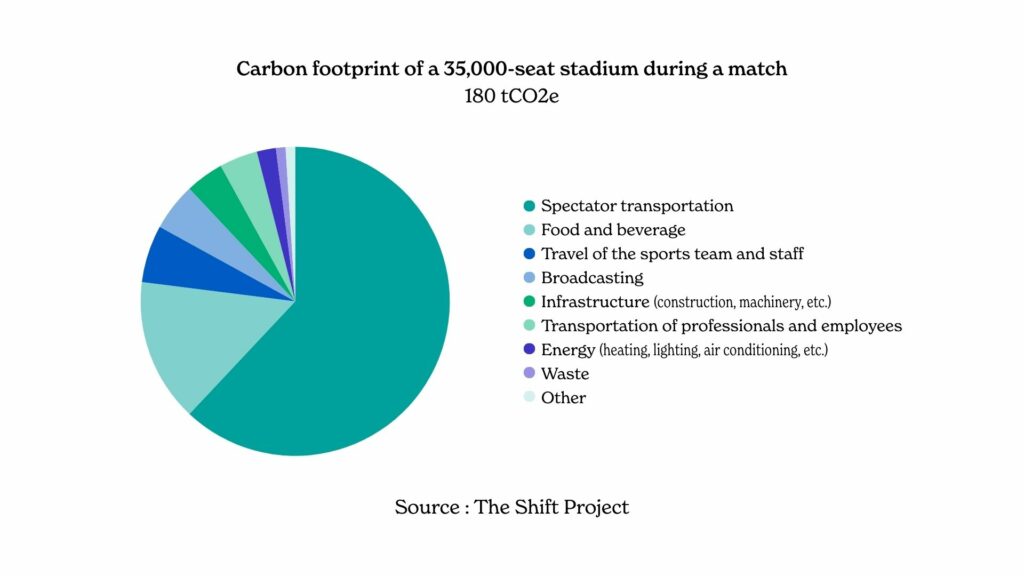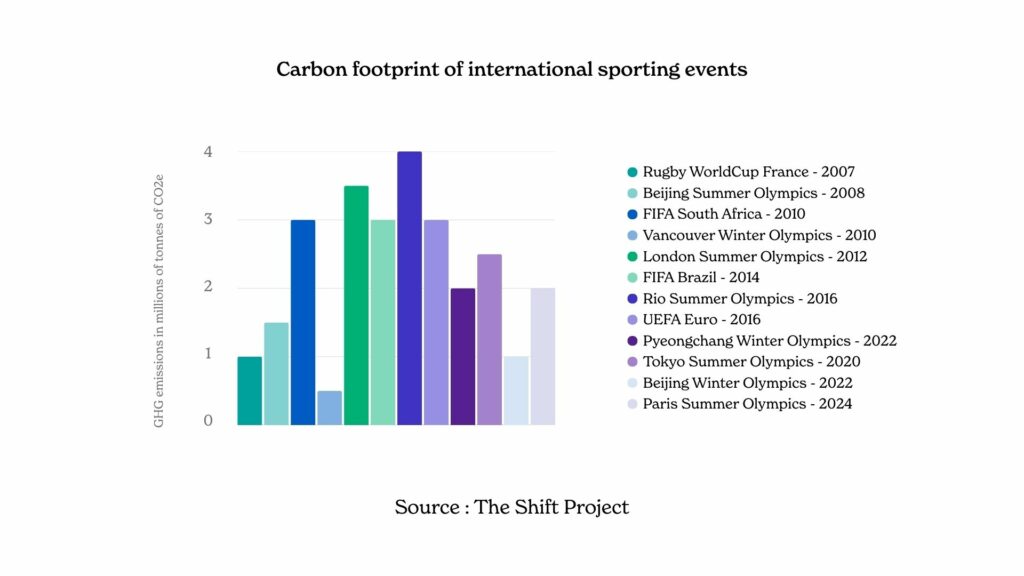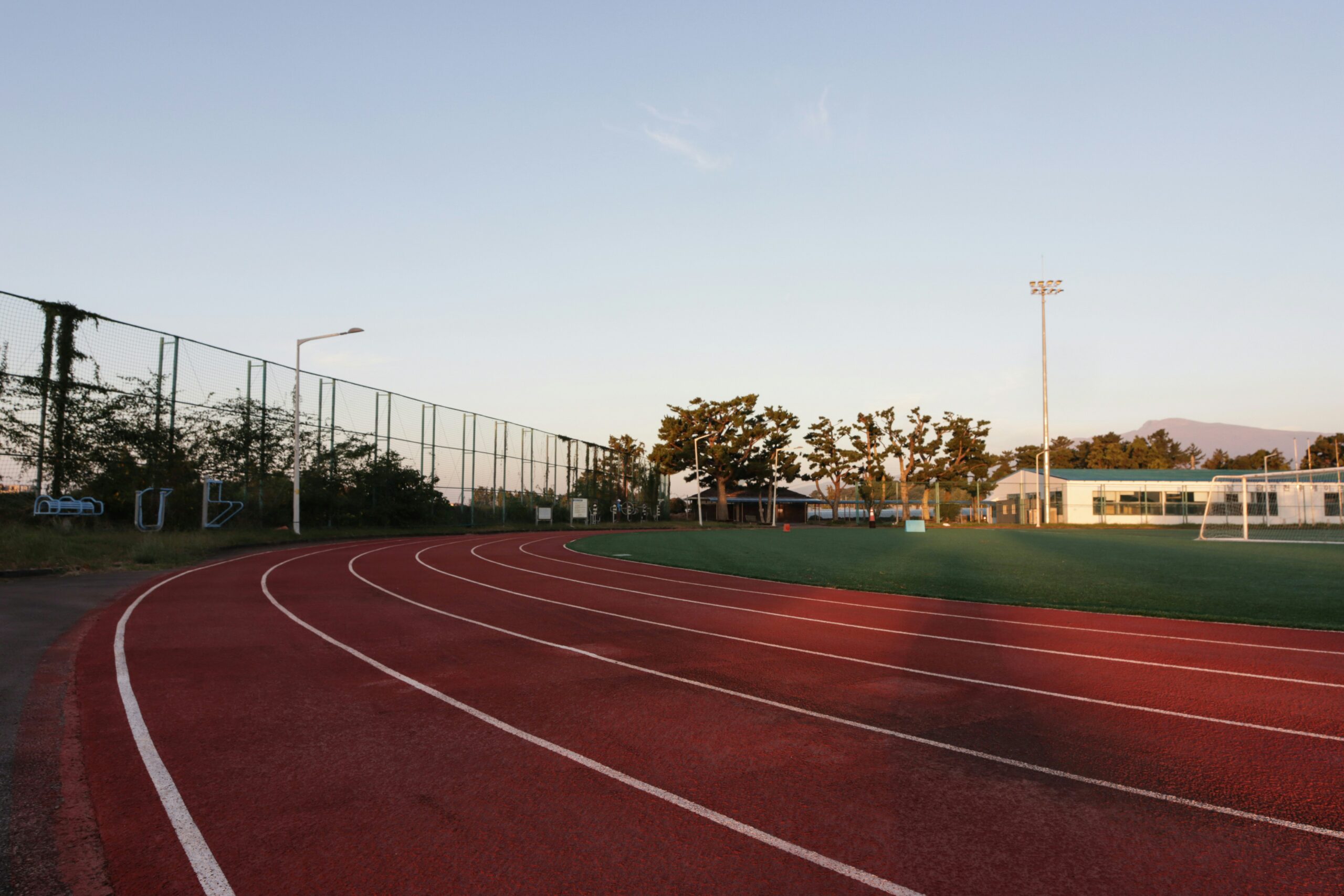Sports, through their media power and social influence, has a key role to play in the ecological transition. With climate concerns and evolving expectations from fans, sponsors, and athletes, sustainability has become essential for sports organizations.
Sustainability in sport is no longer optional, it’s strategic. Carbon footprint reduction, resource management, and social inclusion: environmental efforts touch every aspect from events to daily operations.
Rather than being perceived as a constraint, this transformation is an opportunity to reinvent oneself, to evolve one’s practices, and to stay attractive in a changing ecosystem.
Table des matières
Why should sport accelerate its ecological transition? 🌱
Sport has a unique power: it brings people together, makes people dream, mobilizes millions of people around shared emotions. This is precisely why it can – and must – be a driving force in the ecological transition. By integrating more sustainable practices, sports organizations set an example and can lead their audience, their partners and their territories into a positive change 💪
But this role of leverage should not make us forget a more uncomfortable reality: sport also generates considerable environmental impacts. Together, football and rugby generate 2.2 million tons of CO2 each year in France. Nearly 80% of those emissions come from player travel—whether amateur or pro—followed by the energy use of sports facilities.

When you look at the carbon footprint of major international sporting events, the numbers are even more striking — the Rio 2016 Olympics alone generated nearly 3.5 million tons of CO₂e.

At an event like the Olympics, the carbon footprint skyrockets due to the massive logistics involved—building infrastructure, huge crowds of spectators, international travel, accommodations, catering, and the day-to-day operations that run for several weeks.
Expectations are changing quickly. Communities are increasingly including green requirements in their project bids. Sponsors seek partners that share their sustainability values. And fans, especially younger ones, demand real environmental action, not empty promises.
Environmental regulations for sports organizations ⚖️
Engaging in an ecological transition is no longer just a voluntary choice: it is also a response to increasing regulatory requirements. Today, many organizations – national governing bodies, professional leagues, college programs, local teams, and event organizers– must integrate the environment into their management.
One of the main regulations to be aware of is the CSRD (Corporate Sustainability Reporting Directive), which introduces clearer and more detailed requirements on how companies report their sustainability performance.
📅 In 2025, the CSRD applies to companies meeting at least two of the following three criteria:
✔️More than 1000 employees (updated threshold in the latest version of the Directive to all)
✔️Turnover greater than 40 million euros
✔️Balance sheet greater than 20 million euros
📎 For more information about CSRD requirements, implementation timeline, and compliance steps, check out our article: “Meet the requirements of the CSRD in 2025”.
The concrete benefits of a sustainability strategy in sport 👌
Integrating a sustainability approach within a sports organization offers significant advantages:
📉 Cost optimization
Implementing eco-responsible measures, such as reducing energy consumption, sustainable travel methods and effective waste management, allows for substantial savings.
🤝 Loyalty of sponsors and public partners
Institutions and companies are increasingly inclined to support initiatives aligned with sustainable values, thus strengthening financial and institutional partnerships.
🌟 Brand and image enhancement
A strong environmental policy improves the reputation of the organization, attracting more members, spectators and media.
🏃♂️ Increased mobilization of teams, volunteers and athletes
Engaging in a responsible approach unites internal stakeholders around common values, strengthening cohesion and collective commitment.
The French Rowing Federation (FFA) is a notable example of commitment to sustainability. By signing the Charter of 15 commitments eco-responsible sporting events, developed by the Ministry of Sports and the WWF, the FFA has demonstrated its desire to integrate sustainable practices into its activities. This initiative allowed the federation to strengthen its partnerships and improve its image among the public and institutions.
By adopting a strategy of sustainability, sports organizations respond to current environmental challenges while benefiting from economic advantages and strengthening their positioning in the sports landscape.
Where to start? The key steps to structuring your CSR approach in sport 🎯
Getting started in a CSR approach may seem ambitious, but by following a few structuring steps, any sports organization – federation, league, club or association – can begin an effective and sustainable transition.
Make an inventory
Before defining a strategy, it is essential to know your current situation. This should include:
- inventory measures already put in place carbon footprint assessment to evaluate the main sources of emissions
- internal questionnaire to collect ideas from teams and volunteers
Define clear and achievable objectives
It is not a question of revolutionizing your organization overnight, but of prioritizing the impact actions: reduce unnecessary travel, change suppliers, limit waste at events, and so on. The objectives must be concrete, measurable, and part of a medium-long term vision 🔭
Involve all stakeholders
Success comes through mobilization of teams, athletes, volunteers and service providers. Making sustainability a team effort ensures lasting impact 💥
Deploy a progressive action plan
No need to wait until you have everything defined to get started. The important thing is to take action, even in small steps. Measure, adjust, improve: this is the principle of a lively and effective CSR approach.
Tools and resources to support sports organizations 🛠️
To structure an ecological transition process, you still need to have the right tools. Many carbon calculators exist to assess the environmental footprint of a project or activity. They rely on recognized methodologies such as GHG Protocol or the Bilan Carbone®.
The real challenge? Collect and structure data (travel, energy, catering, accommodation, etc.) often scattered between invoices, emails and Excel sheets. This is where solutions like GreenPro from TheGreenShot make the difference: by automating data collection and centralizing all the elements necessary for reporting, GreenPro considerably facilitates the work of teams — even without an in-house sustainability expert.
Originally designed for the cultural and creative sector, GreenPro adapts perfectly to sport: events, team travel, logistics, etc. And with clear dashboards, it becomes easy to manage your environmental strategy.
🔗For more information about carbon calculators, see our latest article: “Carbon calculators”
Conclusion
Sustainability in sport is no longer an option, it is a strategic lever to innovate, mobilize, and sustain its activity. By launching a CSR approach, sports organizations anticipate developments in the sector while strengthening their positive impact 💪
The tools exist, as do the resources. All that remains is to take action. Organizations that act now will not only reduce their environmental impact but also gain financial advantages and strengthen stakeholder relationships.
👉 What if you started now? Schedule a sustainability assessment today to begin your organization’s environmental journey.
Meet an expert to discover the solution





